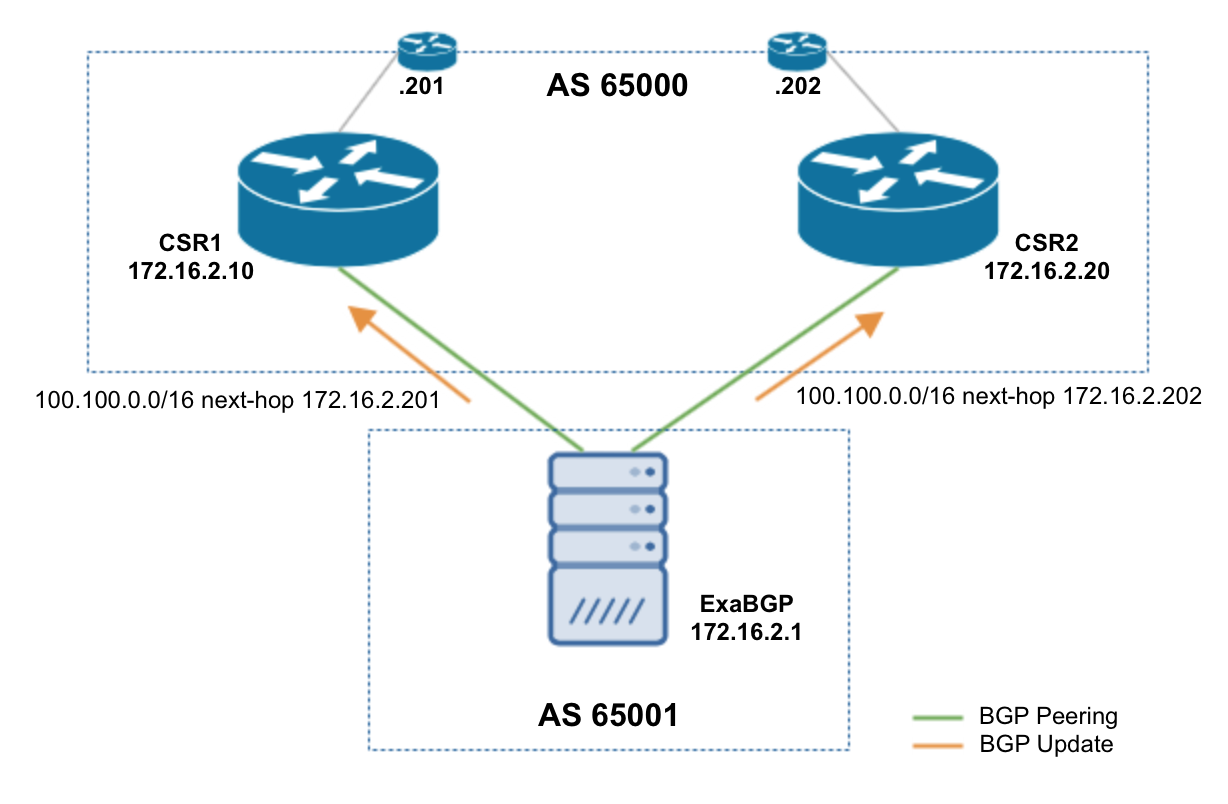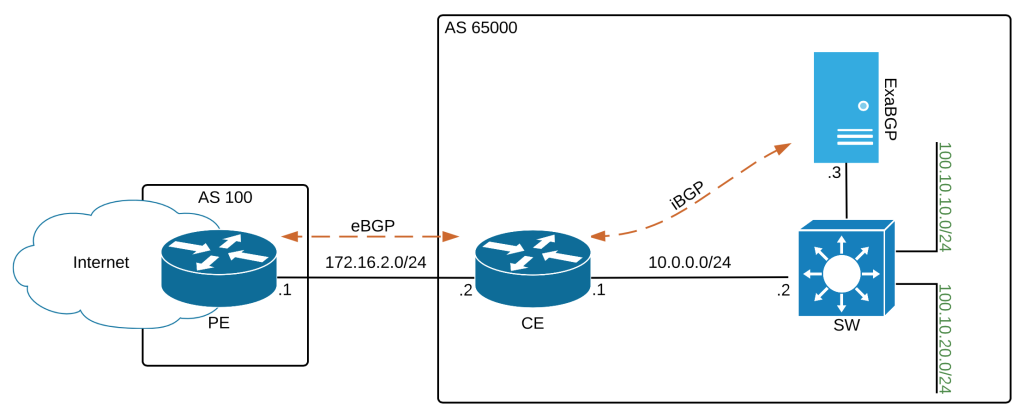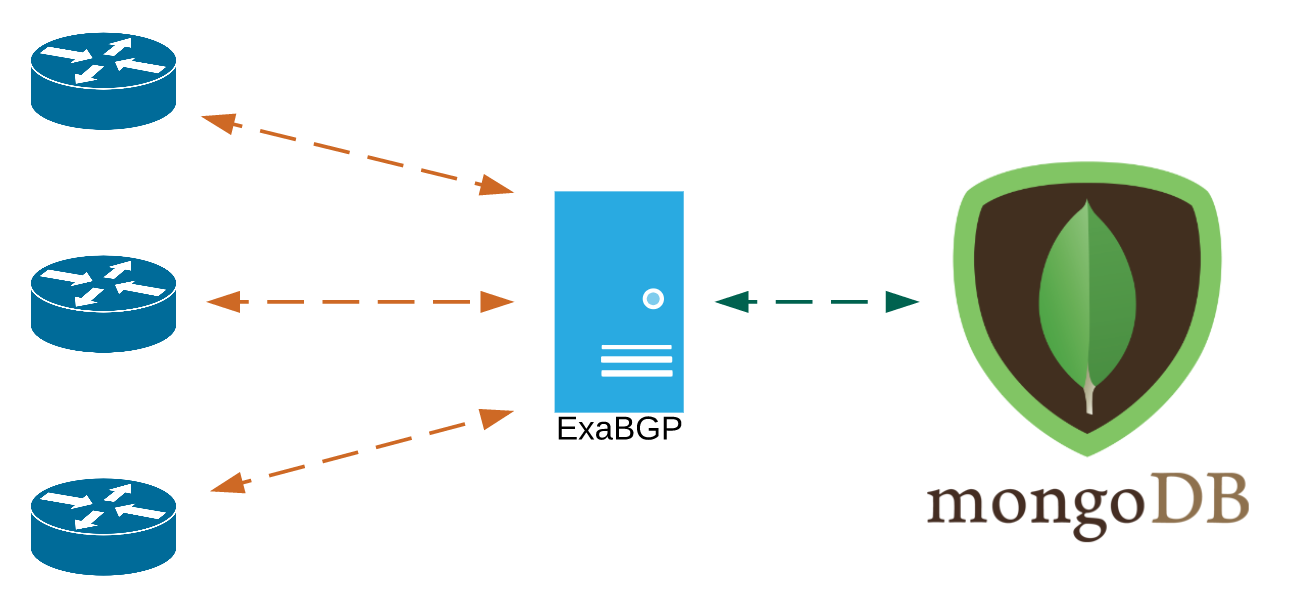ExaBGP
ExaBGP and Python
Getting Started
I'm really excited about these next few posts. I've been doing some research on BGP and automating routing decisions with python, which led to my discovery of ExaBGP. ExaBGP is dubbed "The BGP swiss army knife", and I'm early in my experimentation with this tool, but it seems to be a very easy way to peer with your BGP routers and control the advertisement of networks.
Using service health checks to automate ExaBGP
If you haven't read the intro post to this series, Getting Started with ExaBGP, check that article out first as this post will be expanding on the previous example to show how to use python for more automated interaction with ExaBGP.
Give ExaBGP an HTTP API
We've covered how to setup ExaBGP and peer with a router, and then how to use python to add and remove advertised routes in BGP either with static definitions or dynamically through health checking. There may be some of you out there with some sort of application that is already monitoring routes and you're trying to figure out how to connect it with ExaBGP for the actual interaction part? Well, what if we add an HTTP API to ExaBGP to give programmatic access to ExaBGP from some external utility? I'll go over two ways to do this using the Python built-in SimpleHTTPServer or Flask.
Advanced Route Announcement
With multiple BGP Peers
Now that you're familiar with the basics of setting up a peer with ExaBGP and advertising routes, let's look at expanding those concepts towards something that might actually be used in production.
Peering with Multiple BGP Routers

Control BGP Advertisements
to eBGP peers with ExaBGP
We know that ExaBGP can be used to inject BGP routes into an AS that you control. It's a very helpful feature that allows you to automate reachability and traffic flows within your network. But what if you want to you ExaBGP to influence what is advertised, or in this case, not advertised to external peers that are not willing to peer with your ExaBGP service?

Processing and Storing BGP Messages in MongoDB
Now that you know how to advertise prefixes to BGP peers with ExaBGP and are familiar with how to use this to influence traffic in your network, let's change gears and look at processing BGP messages between ExaBGP and its peers. Since ExaBGP uses JSON for message data, I figured it would be a good opportunity to use MongoDB so the message information can easily be stored into a database for data collection and analysis.
